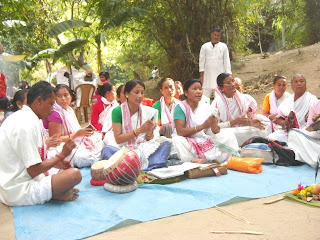 Dwadash Jyotirlinga Sloka
Dwadash Jyotirlinga Sloka
Lord Somnath Jyotirlinga is in the land of Saurashtra, Mallikarjuna Jyotirlingam is on the Shree Shailam, Mahaakal Jyotirlinga is in Ujjayan, Parameshwar belongs to Onkar, Kedarnath Jyotirlinga is in the mountain of Himalayas, Bhimashankar Jyotirlingam is in the land of Dakini, Viswesh Jyotirlinga belongs to Varanasi, the Lord Trayambakam resides on the shore of Gautami river, Baidyanath Jyotirlinga lies on the land of ashes and the Lord of snake lives in the wooden forest. Lord Rama stays near the sea where it was bridged by him and Lord of Dyushma resides in the abode of Shiva. If one recites the names of Dwadash Jyotirlinga in the early morning, he will get rid of all sins and will get all fruits of his efforts.
The exact location of Dakini is debated. The Shiva Purana and the Koti Rudra Samhita refer to Bhimashankar Jyotirlingam in Dakini. Daini Bama at Pamohi is interpreted by the devotees to be one of the Dwadas Jyotirlinga. It is said that Lord Shiva destroyed the demon Bhima here when he was about to strike the Lingam with a sword. The Lingam was worshipped by His devotee Kamarupeshwar {Priyadharma was the king of Kamrupa- Shiva Puran Astam Khanda 28-31 Adyaya (Hindi & Bengali- Durga Pustak Bhandar, Allahabad)} who was imprisoned by Bhima. Bhima, the son of Kumbhakarna and Karkati did severe penance and became very powerful by a boon of Sri Brahma. The sweat from his body forms the river. On the request of his devotees Sri Shiva stayed there as the Bhimashankar Jyotirlingam.
 |
| Sri Sri Panchadhara Shiva Dham |
 |
Sri Sri Bhimeswar Dwadas Jyotirlinga
Panchadhara Shiva Dham at Pamohi,
Gorchuk, Guwahati-35, Assam
|
 |
| Sri Sri Parvati's Charan (feet) |
|
|
|
 |
| 6th Dwadash Jyotirlinga |
 |
| Dhiren Ingty, President of the Managing Committee |
|
|
|
|
|
|
|
 |
| Entry to Shiva Dham |
 |
| Archeological evidences |
 |
| Archeological evidences |
 |
| Panchadhara (water flows in five direction over Jyotirlinga) |
 |
| Panchadhara (water flows in five direction over Jyotirlinga) |
 |
| Panchadhara (water flows in five direction over Jyotirlinga) |
 |
| Sri Sri Ganesha |
 |
| Sri Sri Ganesha |
 |
| Chakra |
 |
| Trishul |
 |
| Trishul |
 |
| Natural settings of Jyotirlinga |
 |
| Natural settings of Jyotirlinga |
 |
| Jyotirlinga |
 |
| Offerings at Jyotirlinga |



































